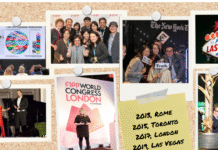Print has long been the most powerful medium of advertising carrying some of the most impactful and compelling campaigns across nations. These campaigns, in turn, have been instrumental in changing consumer behaviour and brand perception. Although digital media is making significant changes to how brands are communicating, print still has a vital role to play in the entire scheme of things. The fact that newspapers reach close to 250 million Indian readers every day is a compelling reason to believe that print still delivers.
In order to bring out the best of print creativity in the country and make it work for a company or brand, the Times Group in association with Nestle India launched the ‘Power of Print’ initiative—a competition where creative teams across communication agencies jostled for the top spot at ‘Power of Print’ award at the Kyoorius Creative Awards (KCA), held on 2 June 2017 in Mumbai. Although there have been interesting print campaigns globally, there is still much room for improvisation in India. The idea was to make print sexy and aspirational again and in the process, bring out its true potential.
‘Power of Print’ is an intellectual property that will be owned by the Times Group. The awards are part of a larger initiative to drive creativity in print and engage with the marketing and creative fraternity. Nestle India as the partner brand for the first year promoted a noble cause—#EducateTheGirlChild. The objective of the campaign is ‘to ensure that more girls go to school’—driving action toward getting girls to school by increaseing the number of donations and talkability about the subject.
The competition received 823 entries from more than 400 agencies. The entries were judged by a jury comprising Bobby Pawar, Raj Kamble, Arun Iyer, Senthil Kumar, Kainaz Karmakar, Swati Bhattacharya, Shrijeet Mishra and Chandrasekhar Radhakrishnan. The contest was open to all communication agencies—creative, media, digital and PR.
The winner of the ‘Power of Print’ was marketing communications agency J Walter Thompson with its entry depicting how educating the girl child could help educate the whole family. The campaign, titled ‘Class Photo,’ communicated that since girls are teachers in many ways, if you educate one, the knowledge gets passed on to everyone. A change in the mindset of parents and stakeholders will make them understand the merits of educating the girl child.
The first runner-up was FCB Interface with its entry, ‘If only she had gone to school,’ highlighting how so many women have been denied the opportunity of education in their childhood, and due to which they have ended up taking odd jobs as sweepers and house helps today. FCB’s series of ads have middle-aged woman posing in a school uniform. The message tries to convey tells that if this middle-aged woman, who is a house help, would have received education as a child, she wouldn’t have been posing in this ad for a few hundred rupees. Education opens a world of possibilities, and the campaign urges people to ensure that no girl child grows up regretting the lack of opportunity to study.
The second runner-up was Havas Worldwide with its hard-hitting print ad showing a young boy taking inspiration from a woman who made a mark for herself and made India proud due to her education. The entry was titled ‘Dream.’
















